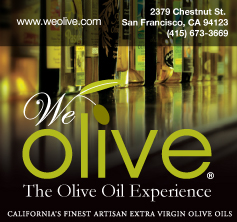
Apple’s iPad2 perhaps? It’s the leader in the field. It’s glossy and attractive, glamorous even – as thin and sexy as a runway model. But, unfortunately, it’s just as unobtainable unless you happen to be one of those folks who like to camp outside Apple stores at 6 a.m. More than a month after launch, it’s still selling out by 9 a.m. at every Apple store in the Bay Area. It’s an incredibly successful product, but if it’s impossible to buy, then the sane among us need to examine the alternatives.
So if not the iPad2, then perhaps the BlackBerry PlayBook? Or the Samsung Galaxy Tab? Or the Motorola Xoom? Or any of a multitude of others with weird and wonderful names like Archos, Nook and eLocity?
The truth is that once you get past the iPad2, there are too many alternative tablets to count. Let’s try and cut through the confusion and see which are the best choices in tablet computers today.
BMW OR FORD?
Tablets such as the iPad are similar to desktop computers in that they run on what’s called an operating system (OS). This is the software that hums along in the background doing all of the housework that makes your device work smoothly. If you save a photograph, or use an Internet connection, or switch from one program to another, it’s the operating system that does the work behind the scenes.
Apple is unique among computer manufacturers because they make their own OS software as well as the actual laptops, iPhones and iPads on which it runs. That helps them to make the user’s experience easy and glitch-free. Every part works in sync with every other part, and it all makes sense. That’s why Apple has become one of America’s best-loved brands. They have taken something complicated – a computer that can do almost anything you can imagine – and made it easy enough for a child to use.
The iPad2 is a classic Apple product in this regard. Not only is it ridiculously seductive in appearance – it’s actually thinner than an iPhone – but it is also fast to respond and has a wonderfully clear, bright screen. It’s a total joy to use.
The alternatives to the iPad2 use a variety of other operating systems and, to be brutally honest, none of them work as well. Yet.
Microsoft, RIM-BlackBerry and HP-Palm are all working hard on new tablet operating systems of their own, but only RIM’s is anywhere near being available in the market, and first reports make it seem as though it’s primarily aimed at business users. And it’s kind of clunky to use.
That leaves Google’s Android operating system as offering the only realistic current alternative to the iPad2. The good thing about Android is that Google is working quickly to improve it. The bad thing is that for that same reason, it’s currently available in several different versions depending on which tablet you buy. And some of them don’t work very well.
Think of the iPad as a BMW: well developed and smoothly efficient. It leaves one with a firm impression of quality engineering. Android isn’t quite there yet. Everything works, and it does the same things as Apple’s system, but it’s more like a 1960 Ford: things are a tad less smooth, and it’s not as easy to get things done. It will still get you from A to B, but not in quite the same way. That’s going to change fast as Google works its magic, but for now Apple still has the edge.
WHAT ABOUT THE HARDWARE?
The first thing you notice about a tablet computer is how it feels in your hand when you pick it up. Although we have focused so far on the software, it is a fact that the initial tactile impression is really important. Apple got it right when they launched the iPad a year ago, and the iPad2 has taken the physical form factor of the device to a new level of desirability. Put an iPad2 in people’s hands and watch them smile.

But the other hardware manufacturers aren’t standing still. They’re all moving fast to make their devices thinner and lighter yet more powerful. The difficulty for them is that Apple is so far ahead, and much of what the alternatives offer are just promises for now. BlackBerry has been telling us for months that their new PlayBook machine is going to be great, but early reviews are disappointing. Motorola rushed out of the gate with the Xoom to be the first tablet to market using Google’s exciting new Honeycomb OS, but it hasn’t sold well and is too expensive. And the next big Honeycomb device – the Samsung Galaxy Tab 10.1 – isn’t even due to be launched until June. It’s even slimmer and lighter than the iPad2, but nobody has used one yet, and pricing is a mystery.
And so it’s hard not to come back to the iPad2, at least once it becomes more easily available within the next few weeks. All the alternatives suffer from being either a little clunky or not even on widespread sale yet.
OUR RECOMMENDATION
If you’re a geek that is OK with tweaking settings and finding your way through the inevitable bugs of a new operating system, then you should take a serious look at the Xoom, or wait for the Galaxy Tab 10.1 to come along. These are nice devices, and Honeycomb provides a slick, handsome interface. The problem is that Honeycomb is still very new and not many people have road-tested it. It is going to have some hiccups and glitches for a while.
For the rest of us, who just want to use something simple and intuitive that does what it’s supposed to do when it’s supposed to do it, the iPad2 is the only sensible choice. It’s beautiful, fast and madly easy to fall in love with.
A 1960 Ford is a wonderful machine, but if you really needed to commute 100 miles every single day in all kinds of weather, it’s a pretty good bet that you’d rather do it in something as efficient as a BMW.
Chris Trayhorn is the founder of Revenue Performance magazine and the CEO of mThink.com. He knows a lot about online marketing and technology and a little bit about nearly everything else.








